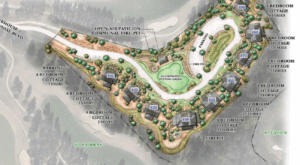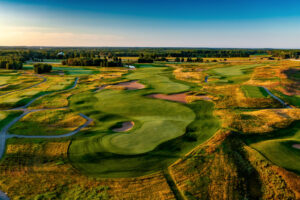Story & Images by Jason Bruno
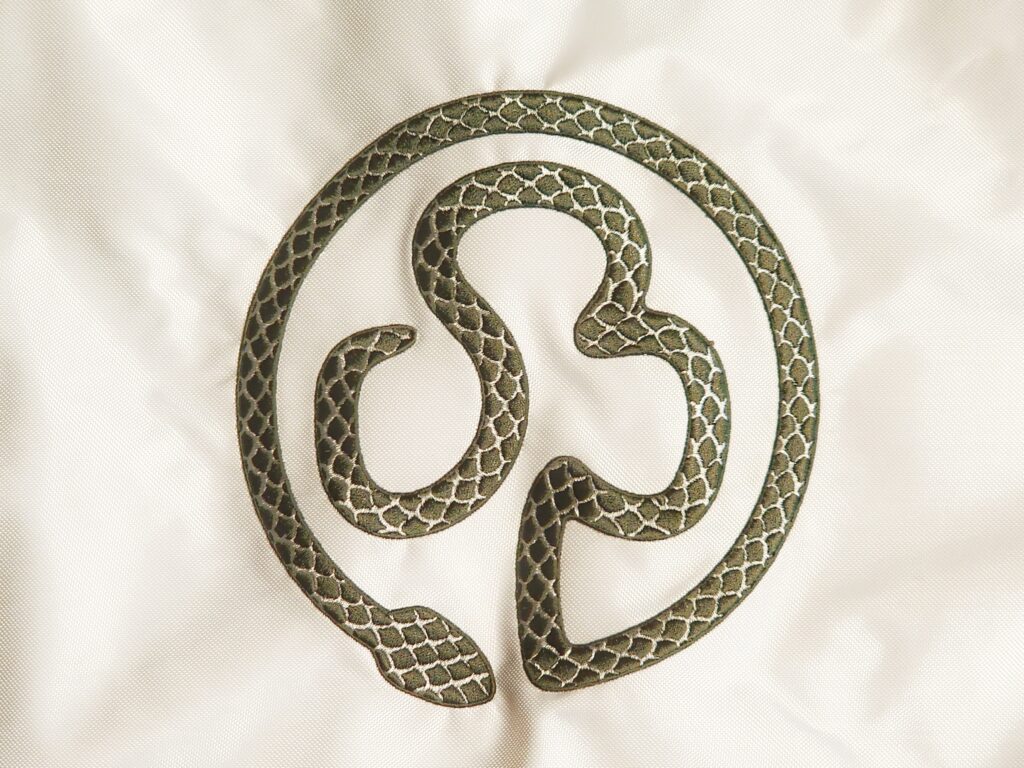
The northwest coast of Ireland, specifically the village of Downings along Sheephaven Bay, had long been known more as a fishing port than as one of the Emerald Isle’s preeminent links destinations. Thanks to the Casey Family (who have owned and operated Rosapenna for over 40 years), the County Donegal area and it’s coastal dunes land is now considered a must visit golf region in Ireland – and Rosapenna Resort is the crown jewel.
Getting There
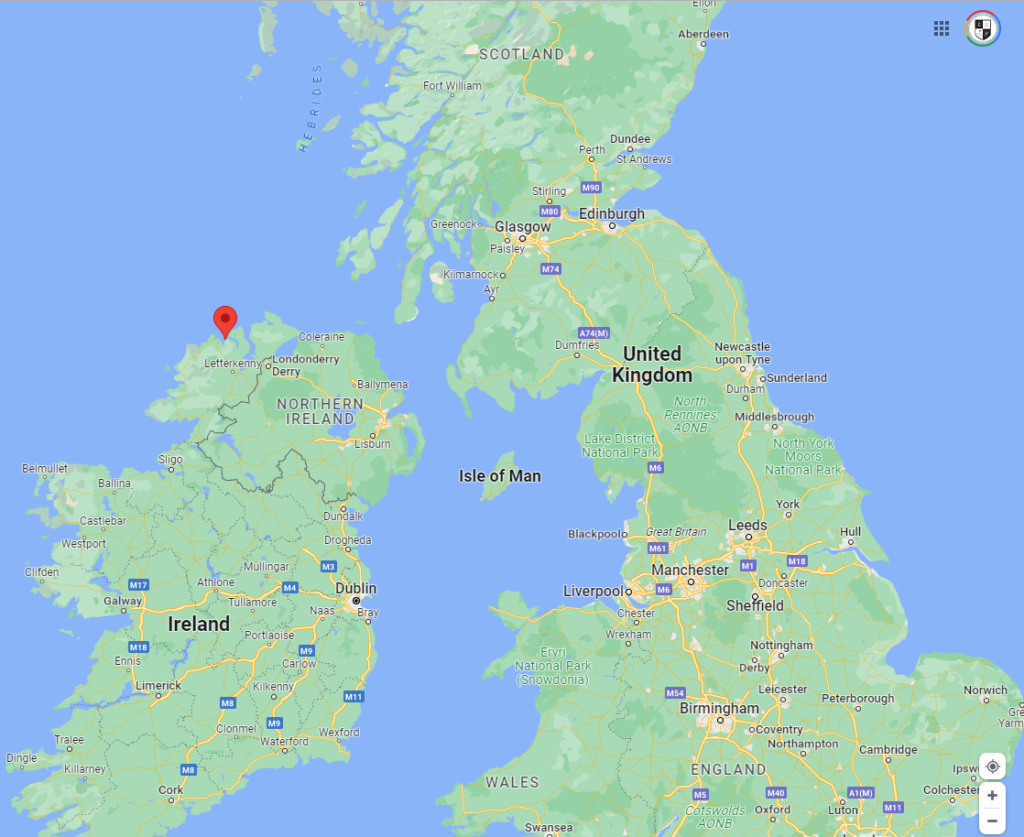
Our journey took us from Dublin to Galway, up the Wild Atlantic Way to Enniscrone, Sligo and up to Donegal. For those traveling from across the pond, the Belfast Airport (located in Northern Ireland) is just over a 2 hour drive up to Rosapenna Resort, while Dublin Airport is 3.5 hours away.
Rosapenna Golf
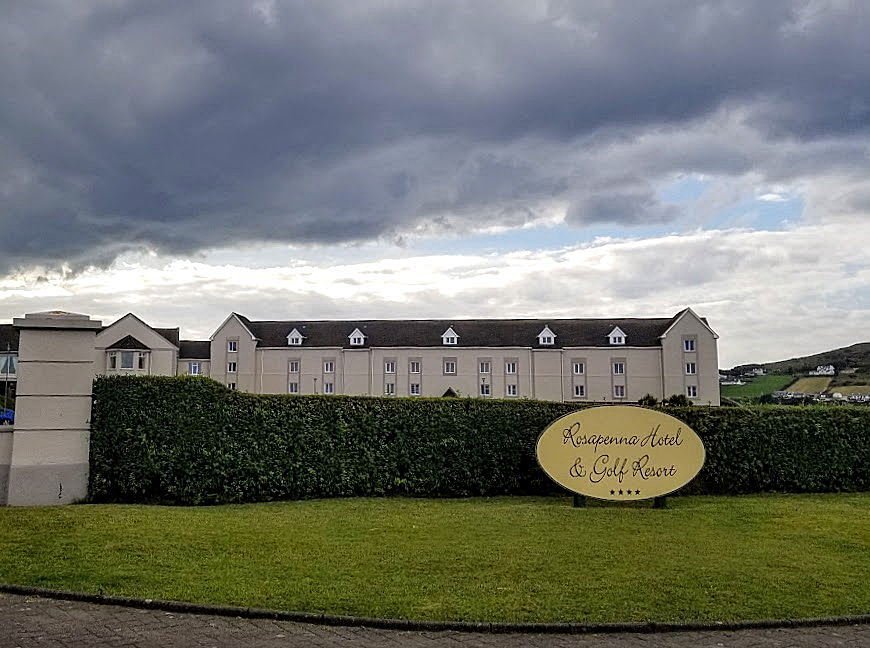
Before St.Patrick’s Links became a reality, Rosapenna Resort already had two very worthy 18 hole courses of its own – Old Tom Morris Links with a lineage of legends who’ve put their own influence on the design (Old Tom Morris 1893, James Braid & Harry Vardon 1906, H.S. Colt 1912) and Sandy Hills Links (Pat Ruddy & Frank Casey Sr 2003, Beau Welling 2013).



The Creation of St.Patrick’s Links
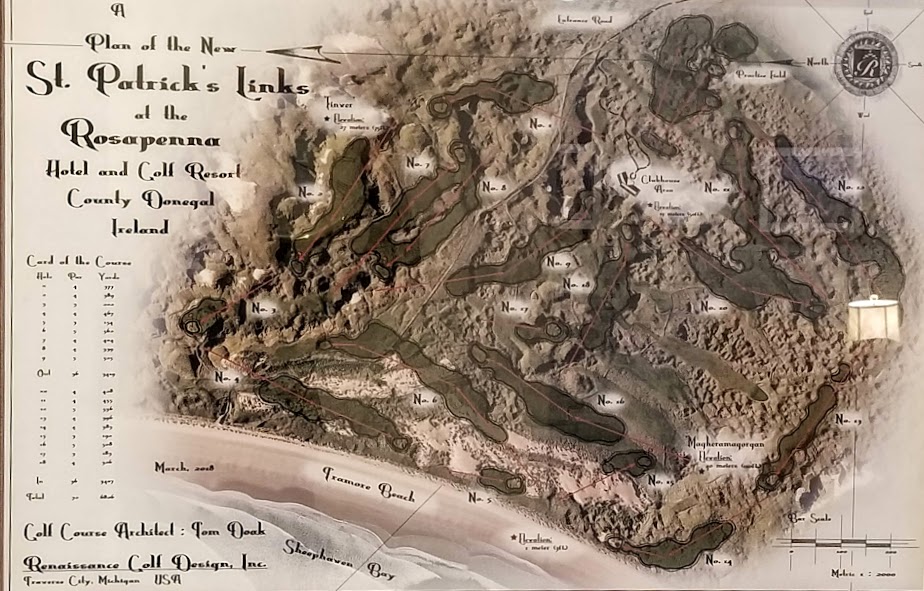
In 2006, the Walsh family of Carrigart – developers of what was once the home of a 36-hole facility (designed in the 90’s by Irish architect Eddie Hackett at Maheramagorgan Links and Joanne O’Haire who designed Trá Mór Links), had hired Jack Nicklaus to redesign the two courses. The plan fell through due to a bankruptcy situation in the economic downturn of 2008, and subsequently the land became available. Enter the Casey Family, who stepped in and acquired the 300+ acre parcel in 2012. Instead of 36 holes, the parties made the decision to prioritize quality over profits when they chose to use the entire parcel to create the finest 18 hole layout. Construction began in 2018, with Renaissance Lead Associate Eric Iverson on site carrying out the plan (along with Clyde Johnson & Angela Moser) of transforming the massive scale coastal property with its ideal sandy soils, magnificent seaside views, and majestic dunes into St.Patrick’s Links. The course officially opened for play in June of 2021.
The Course and Experience
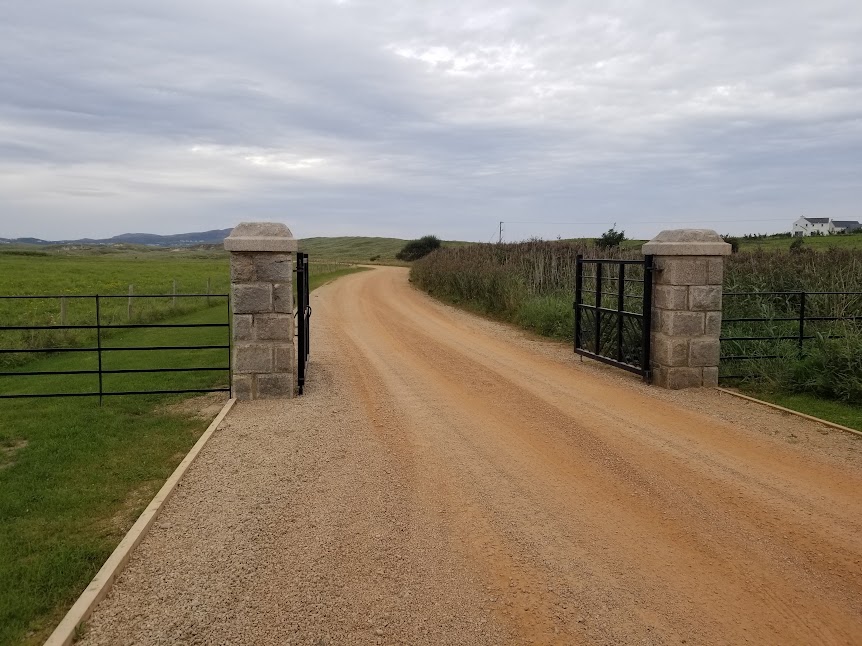
Although there was an unfavorable weather forecast on tap for our 36-hole day, Mother Nature cooperated – providing just what we were hoping for, some authentic Irish links conditions (for our first four days in Ireland, we had SoCal-like weather for our rounds at Galway, Enniscrone, County Sligo and Portsalon).
It was a chilly morning with mist in the air for the first tee time at Sandy Hills (big thanks to host John D Casey for getting me off the box before the masses), and by the time we arrived at St.Patrick’s Links around noon, the temps were nearing 60 degrees (15 Celsius) and the coastal breezes were kicking up. The severe storms that were supposed to wreck the day, held off until the gloaming (by then I was enjoying another remarkable meal in the dining room at Rosapenna Resort). For more on our complete links experience at Rosapenna Resort and the rest of the Wild Atlantic Way – check out “A Journey To the Links of Ireland” in Bruno’s Blog: https://linksnation.com/a-journey-to-the-links-of-ireland/
The afternoon stroll around St.Patrick’s was the swan song of our Ireland links adventure, and was a round I was as excited for as any in recent memory. We won’t detail every hole on the course, but will feature several standout elements of the design in the hope of conveying the experience of playing this instant classic..
Like many of the Doak layouts we’ve experienced, he gets you off and running with a friendly opener, St.Patrick’s follows that same formula. For those with hopes and expectations of playing your best golf, be mindful of position. Doak emphasizes the significance of angles as well as any architect in the modern era – proper positioning triumphs over unbridled horsepower with nearly every Doak original, an ethos we applaud.
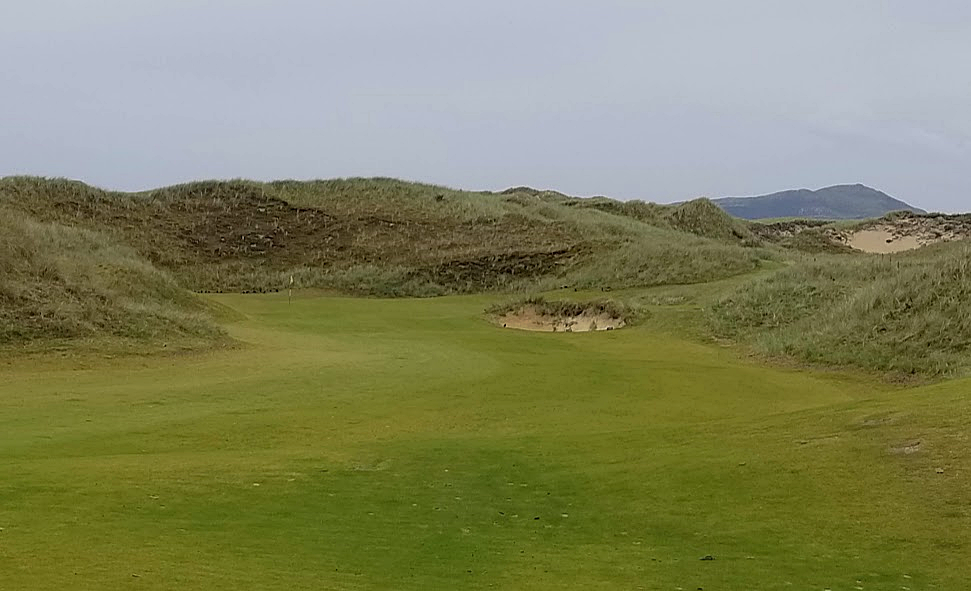
The par 4 first plays 369 yards one tee box up from the tips (6490 yards). The back tees play 6,930 yards, and the forward tees play 5,919 yards to a par of 71. The landing areas are generous, but the rippled fairways tumble in every direction – offering the likelihood of an odd bounce or two, introducing you to the vagaries of links golf. No more than a 220 yard tee shot is needed here, preferably down the right center to set up an aggressive play at the target. The approach (above) gives a glimpse of why proper angles are paramount at St.Patrick’s Links. Where the right side offers opportunity, the left side of the fairway or rough puts you on the defensive with a semi-blind shot over the dune that fronts this hole location.
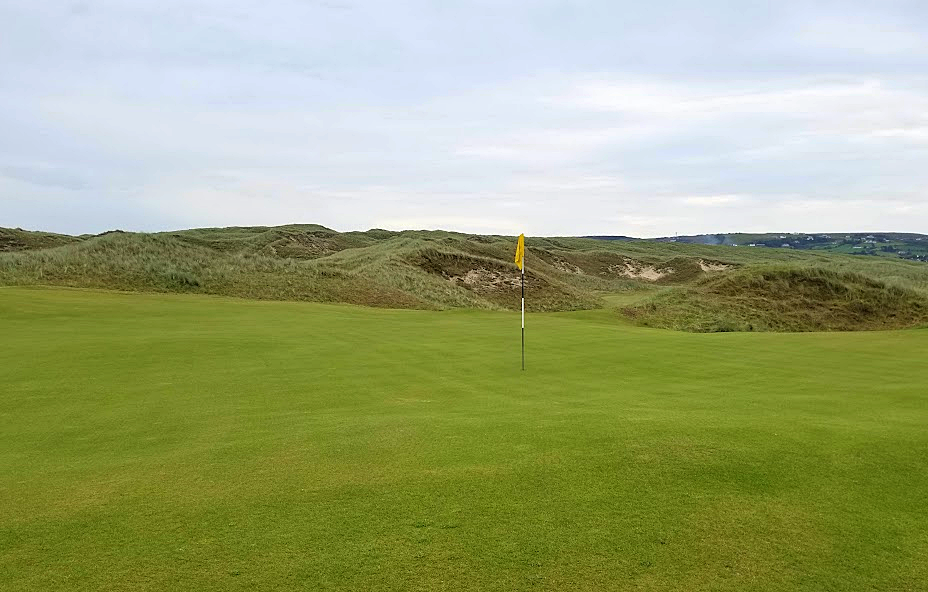
The surface at the 358 yard second (called Ballyohagan) is elevated up into the dunes, but unlike Sandy Hills, very few greens at St.Patrick’s are above the fairway grade, in fact several trundle down onto the putting surfaces, allowing for the ground contours to come into play.
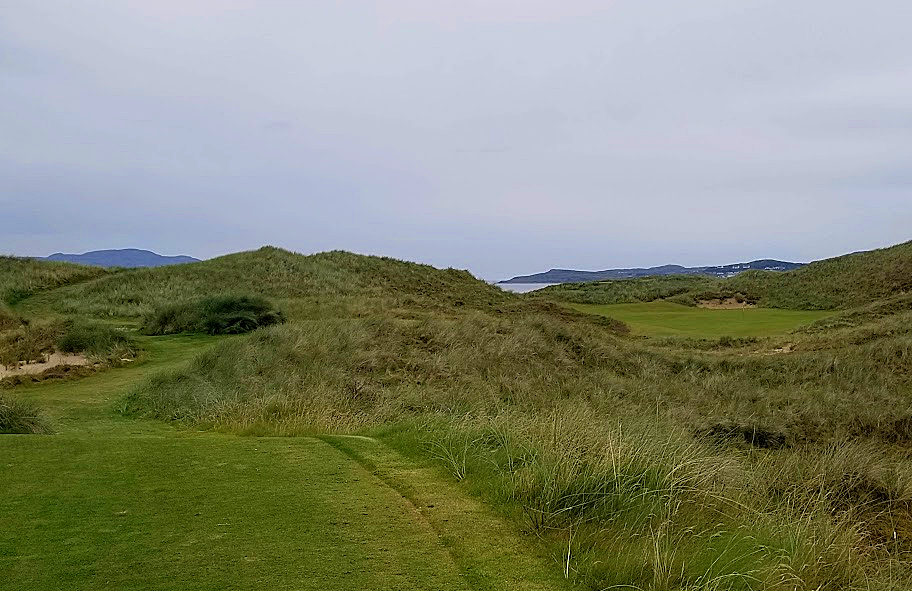
The first shorty comes at the 167-yard third “Rinnaskeagh”, that plays down into the flat beneath the dunes. Each hole at St.Patrick’s is named after a a local landmark, coastal site or notable geographical point within view. It is here where your first glimpse of the coast comes into view. The crisp Irish winds demand your attention, as they seem to be constantly changing speeds and direction.
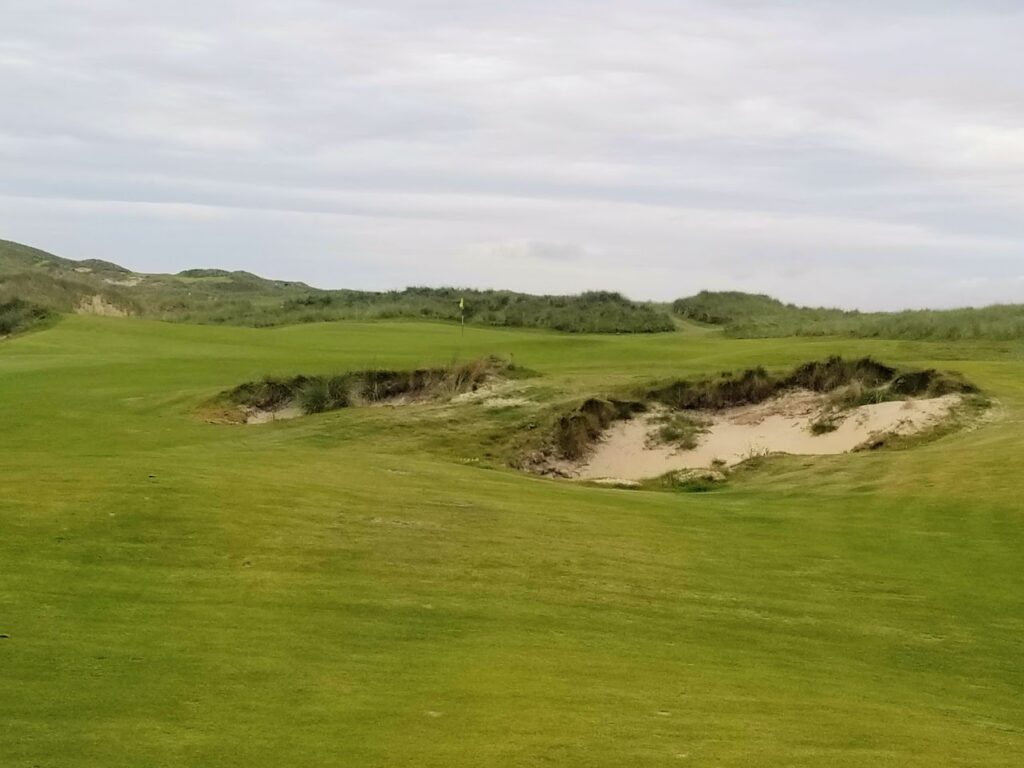
The 508 yard fourth called “Tra M’or” (refers to the beach to your right) features these two rugged tear-away cross bunkers that pose more of a visual distraction than an obstacle for those attempting to reach in two.
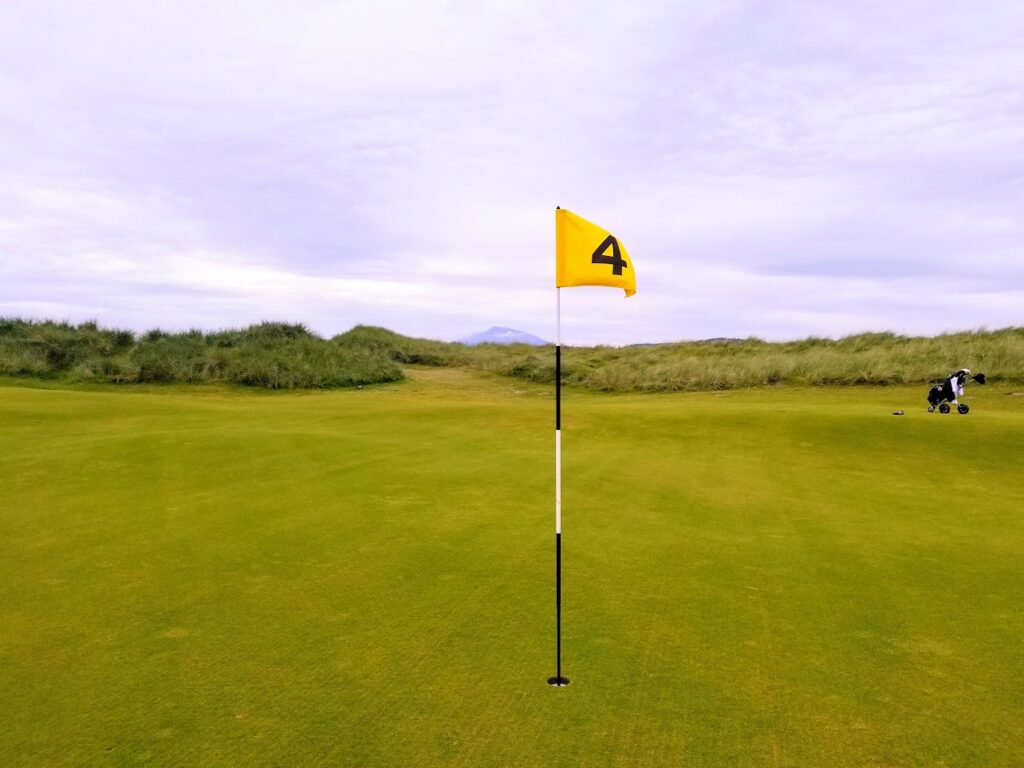
The green at the fourth is vast and has some very bold contours. It’s this portion of the routing where the linksland meets the sea, featuring some incredible coastal scenery of Sheephaven Bay along Tramore Beach.
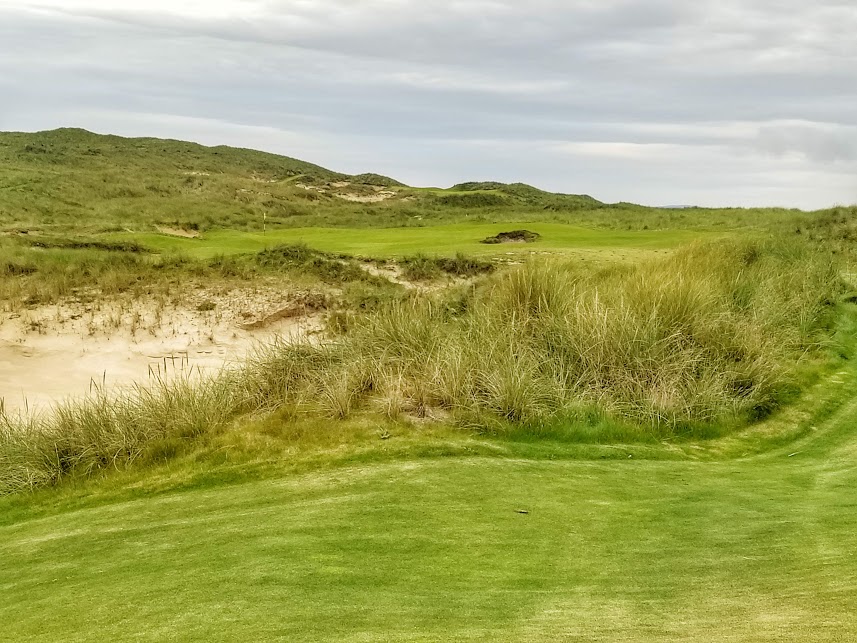
The par 3 fifth “Monk’s Bay” plays a brawny 214 yards from the back tees, but this one-shotter plays considerably easier at just 153 yards just one box up.
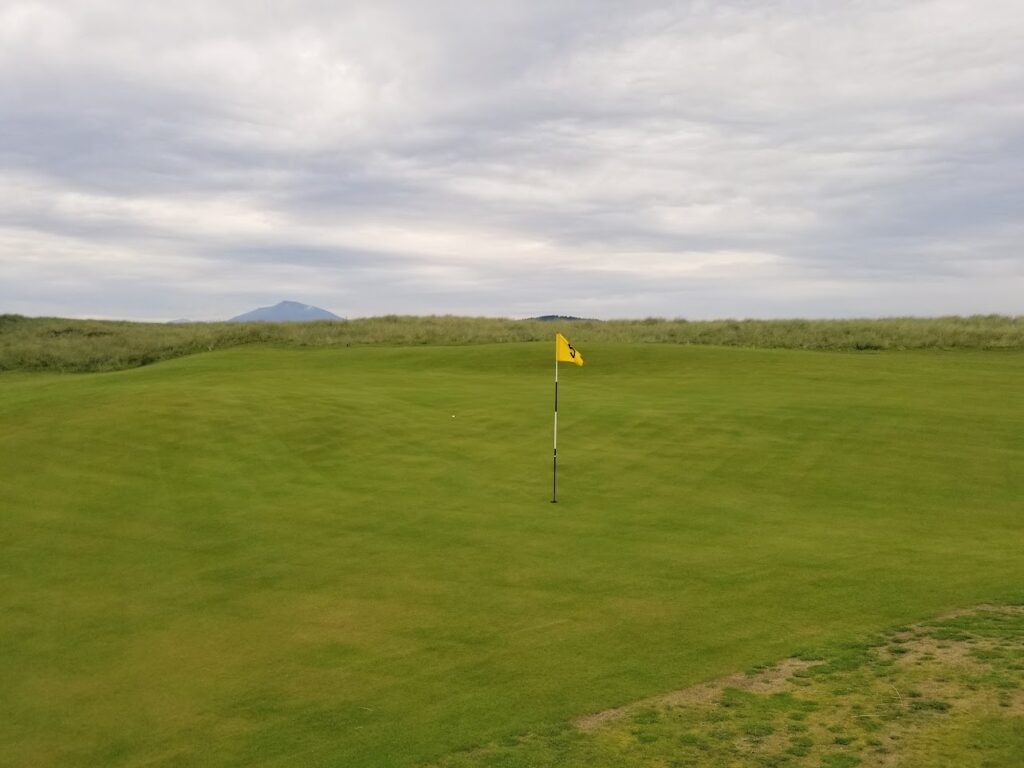
Although it’s fairly subtle from the tee, the redan-like features are quite apparent once the ball lands on the surface, this view of the green shows the right to left slope. I was a bit surprised my ball hung up on slope, but the greens weren’t particularly quick when we were there.
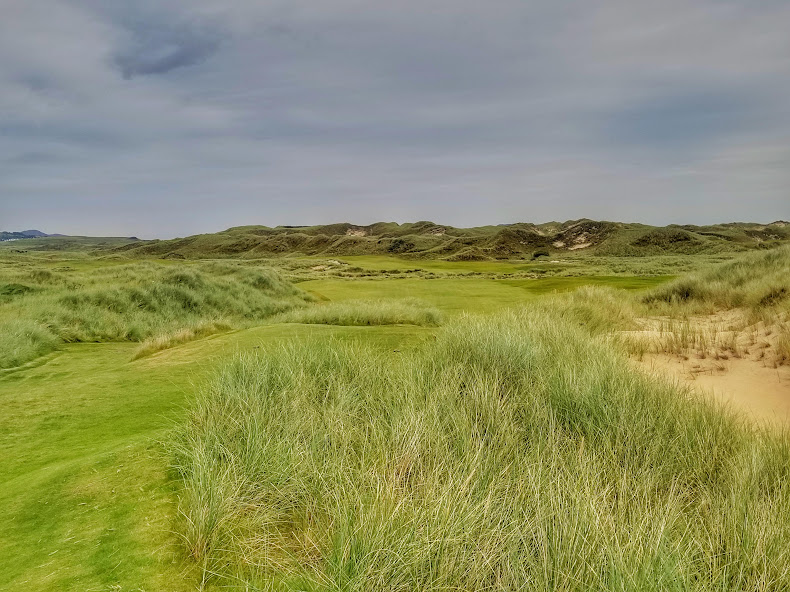
This medium-length par 5, the 522 yard sixth “Na Dunaibh” is a memorable design that feels like its been there for centuries. A gentle right-to-left bend takes you into the floor of the dunes . . .
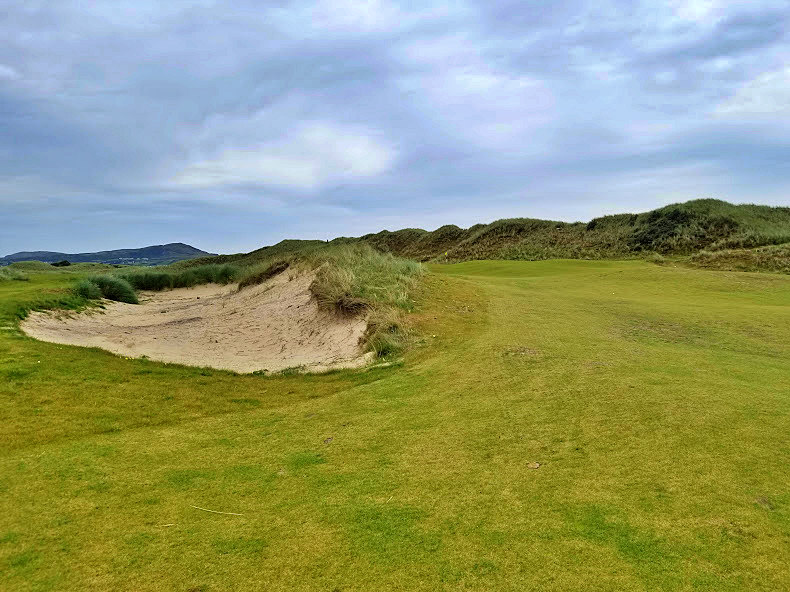
The view from the corner of the dogleg (above), clearly not the preferred angle to attack from. “Na Dunaibh” translates from Gaelic as ‘The Forts’.
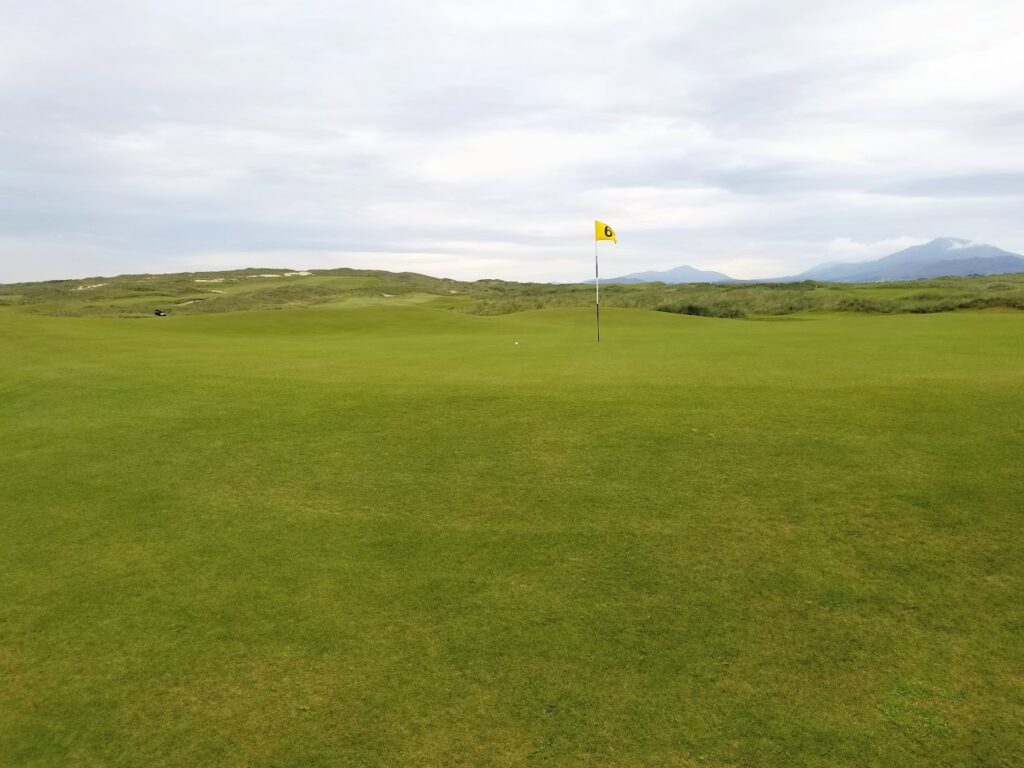
Shaved runoffs around the perimeter funnel shots into the swale surrounds, bringing several shortgame options into play.
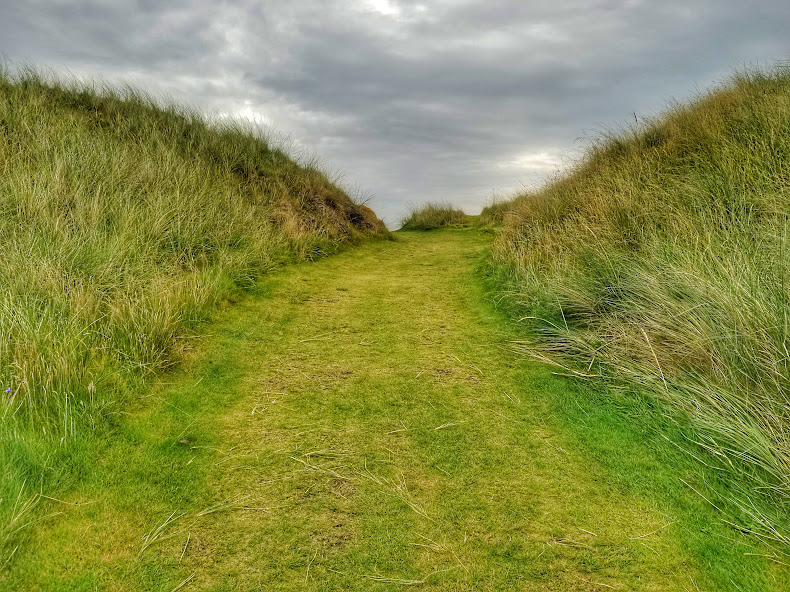

The eighth called “Horn Head”, a risk-reward short par 4 design that points you right at the tall peaked dune. The hole played 318 yards, however I chose to move up a box here – where it played a drivable 269 yards to the front hole location. Miss the green (as I did) and deal with a myriad of shortgame quandaries. The more sensible play is a mid iron or hybrid off the tee, and wedge it on.
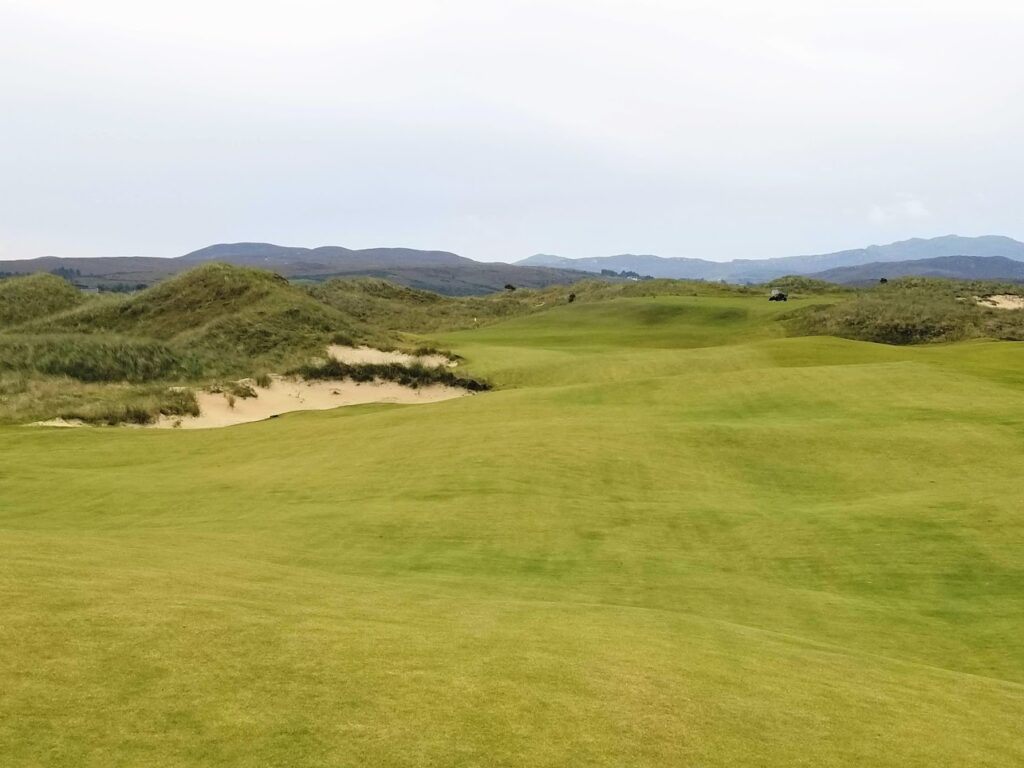
On paper, the 460 yard ninth – “High Glen” is the toughest par 4 on the outward side, but it plays shorter than its number on the card. A gentle fade works best here, note how everything in the landing area rolls and tumbles towards the left fairway bunkers. This hole like many at St.Patrick’s, sits so naturally in its surroundings.
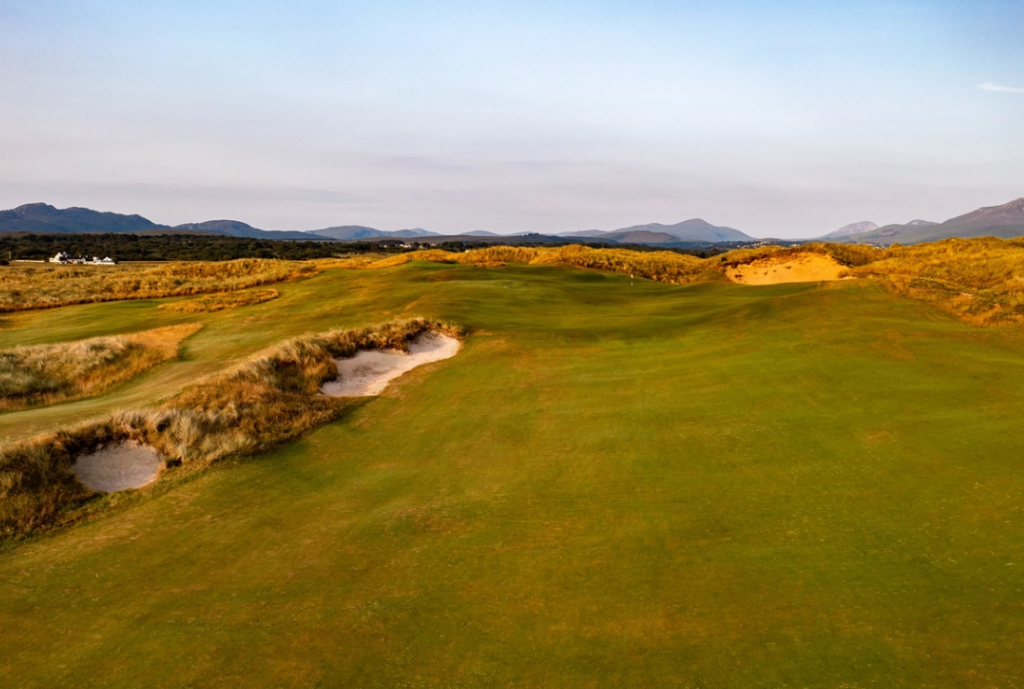
This drone image of the tenth from Clyde Johnson shows the pronounced right to left pitch of the fairway. Conversly, the green slants in the opposite direction.
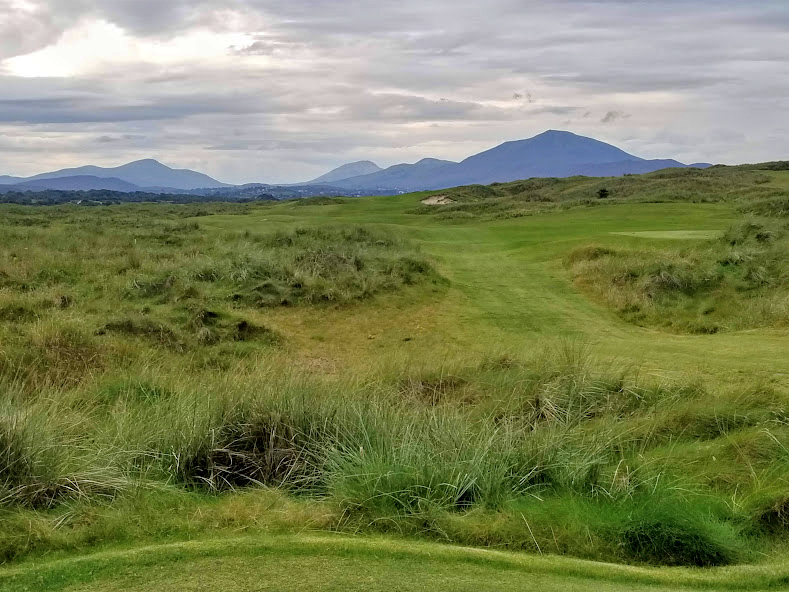
The lone par 5 on the inward nine comes here at the picturesque 546 yard twelfth.
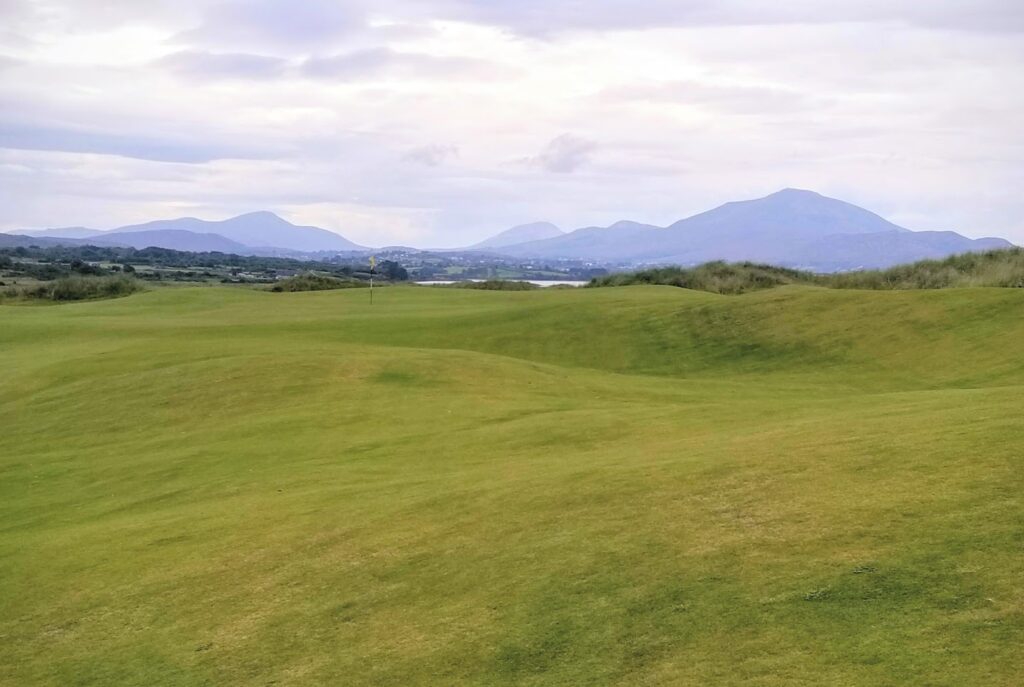
One of the smaller targets on the course, the terrain that fronts the green at the twelfth features several slopes offset to the right, and a surface with a significant right to left influence.
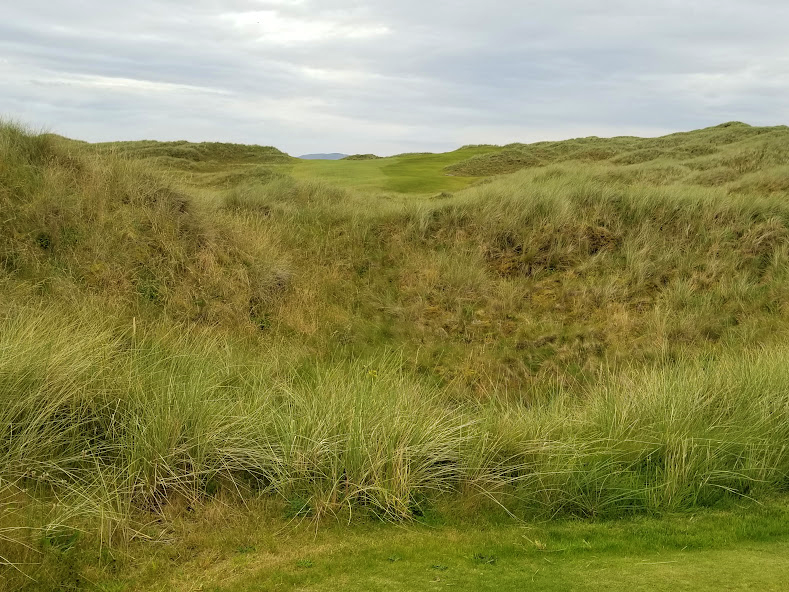
The view from the tee at the 343 yard thirteenth “Aughadthor” – this is the doorway to a fantastic finishing stretch of holes.
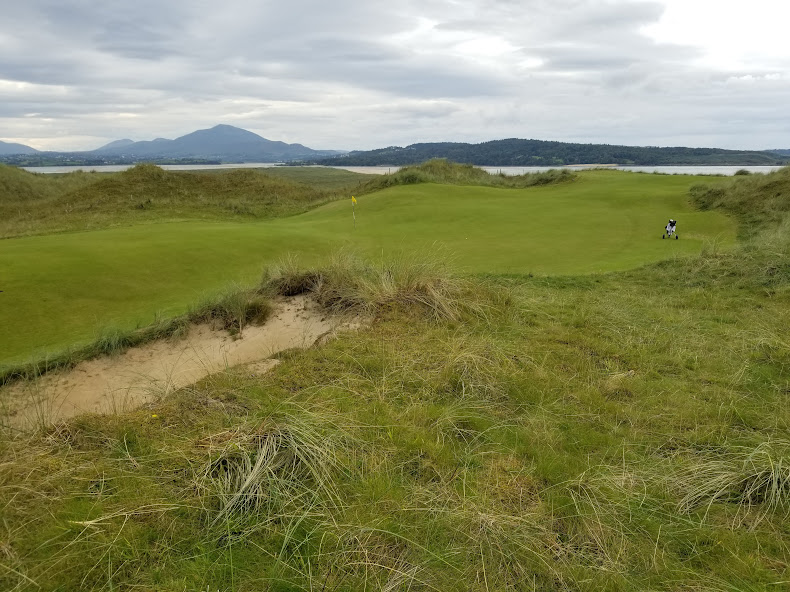
The green complex at the thirteenth is the most dynamic of the 18, it rises and falls in so many directions that it looks entirely different from each perspective. This view from atop one of the various dunes offered a perspective of the entire complex. I took probably a dozen and a half photos from several angles, could have spent an hour here just studying it. The stretch of holes thirteen thru fifteen is some of Doak’s finest work, this green site looks and feels like its been there forever, fitting into the land so perfectly . . .

A zoomed in view from the front right portion of the green illustrates just how radical the contours at the thirteenth are – dip, rise, twist and dive like a ribbon blowing in a breeze. A two putt here is a worthy achievement.
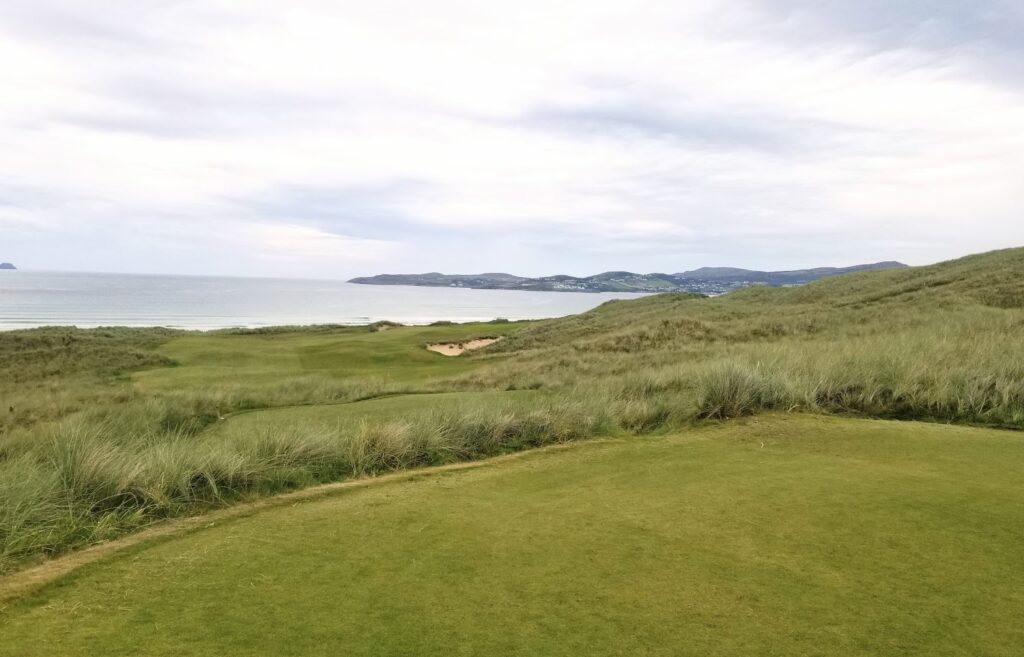
Walking from thirteen green to the 365 yard downhill left to right fourteenth tee is the WOW moment of the round. You’ll feel like a child on a sugar high, slow your roll and spend an extra minute soaking it in here.
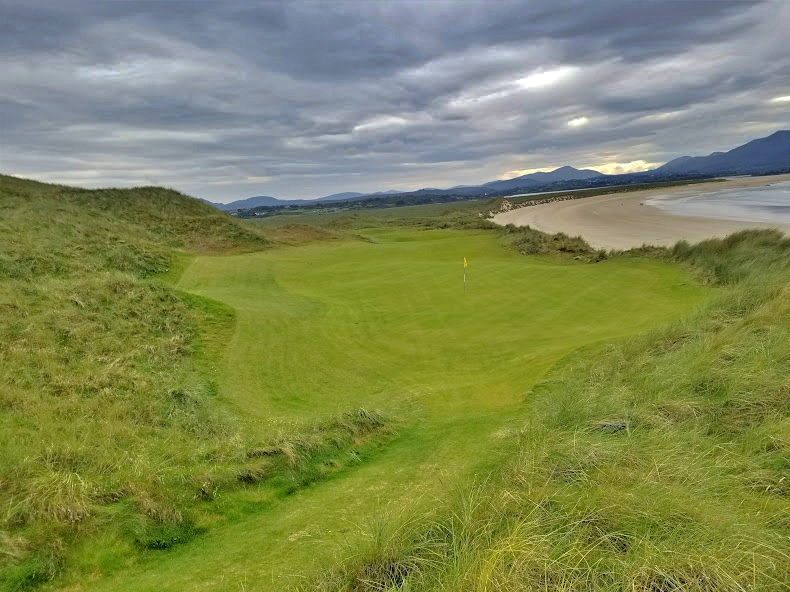
The euphoria continues and clicks up another notch at the greensite, especially when you capture the mandatory reverse view of the green site and Irish coastline on fourteen. It’s bigger than golf.
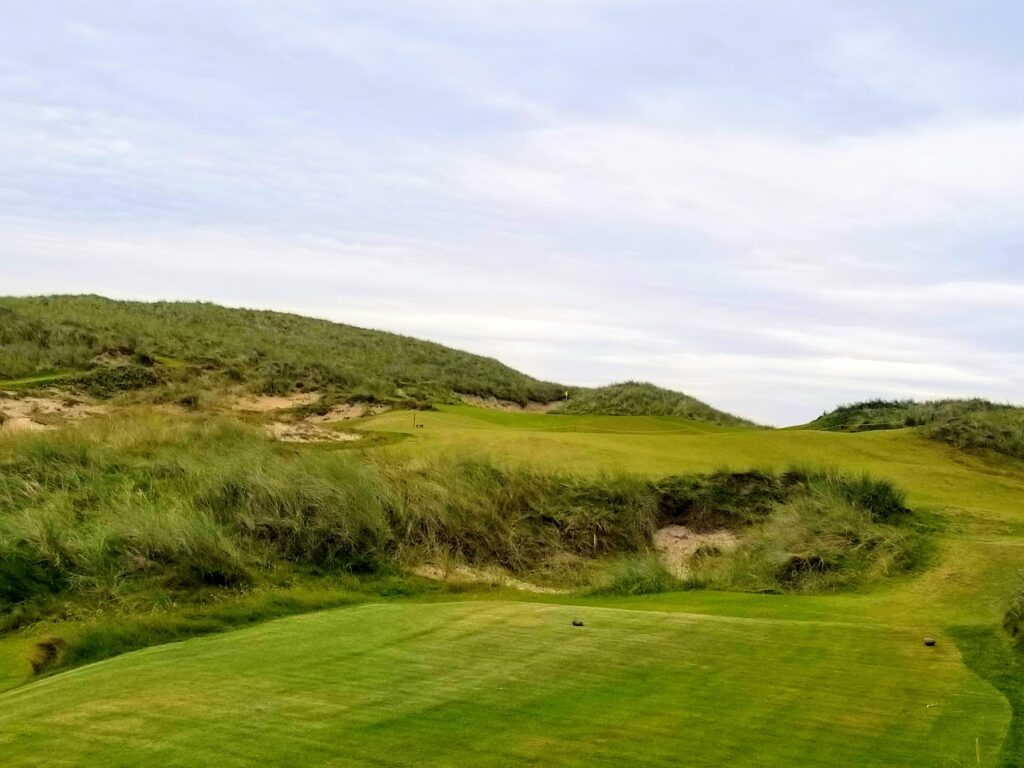
You traverse your way up another floor of the dunes for the short uphill 125 yard fifteenth. You cant see the putting surface, and that may intimidate the mid/high handicap player, but take dead aim. Tom’s giving you a gift before he throws the mighty sixteenth at you.
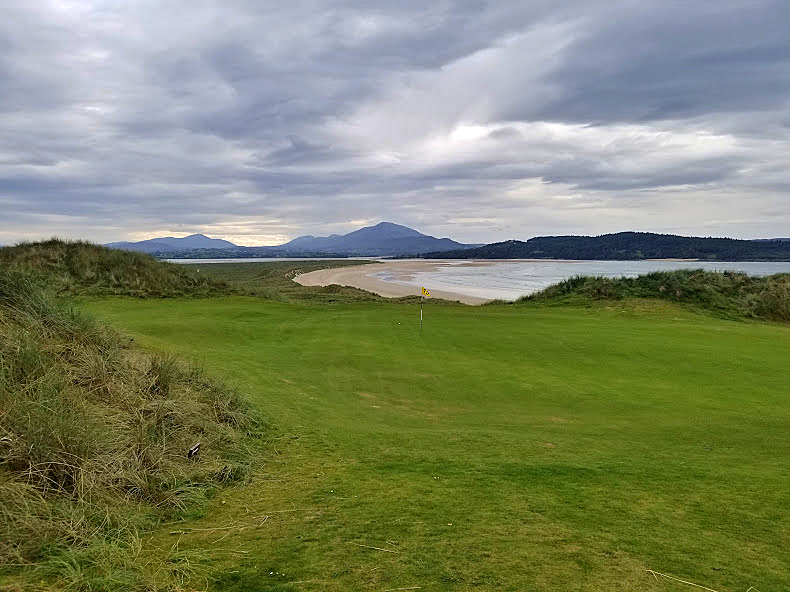
The 15th green “Magaheramagorgan” provides a chance to get one back and another magnificent vista of the Northwest Irish coast.
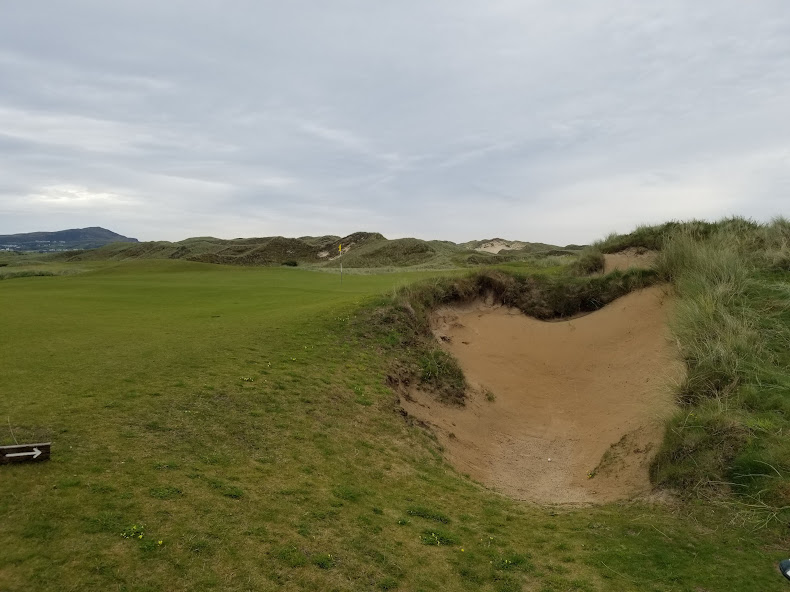
After all of the splendor of thirteen thru fifteen, Doak doles out an absolute behemoth at the taxing sixteenth. “Finver” is listed as the second toughest par 4 on the card at 487 yards (a whopping 534 yards from the tips), but it plays second fiddle no other test at St.Patrick’s.
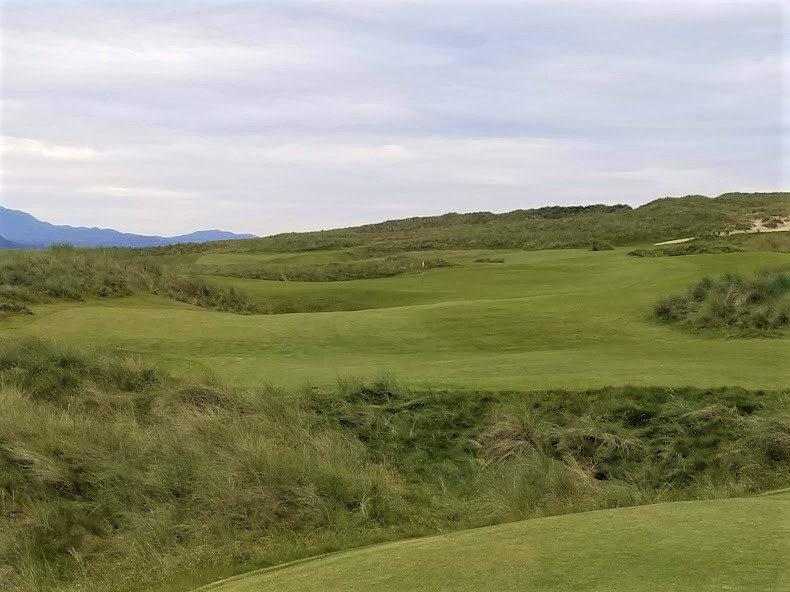
The 176 yard seventeenth – “Lough Salt” is as good a penultimate one shotter as you can ask for. Once again, making good use of the bold kicker slope off the right side is the smart play as, everything funnels back down towards the center of the green. Another benefit of using what the architect is giving you – is avoiding the deep swale fronting the left portion of the green.
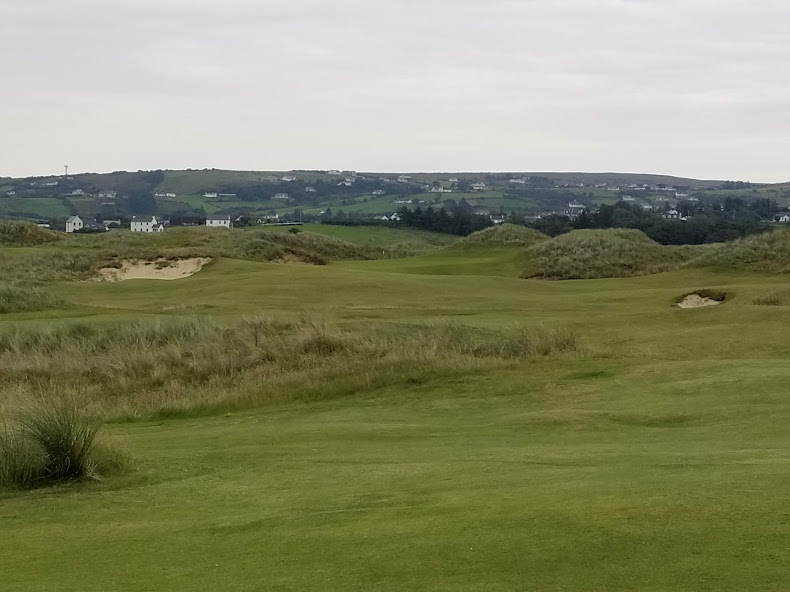
344 yard eighteenth aptly named “St.Patrick’s” isn’t as a much a final exam as it is a celebratory conclusion of a glorious journey.
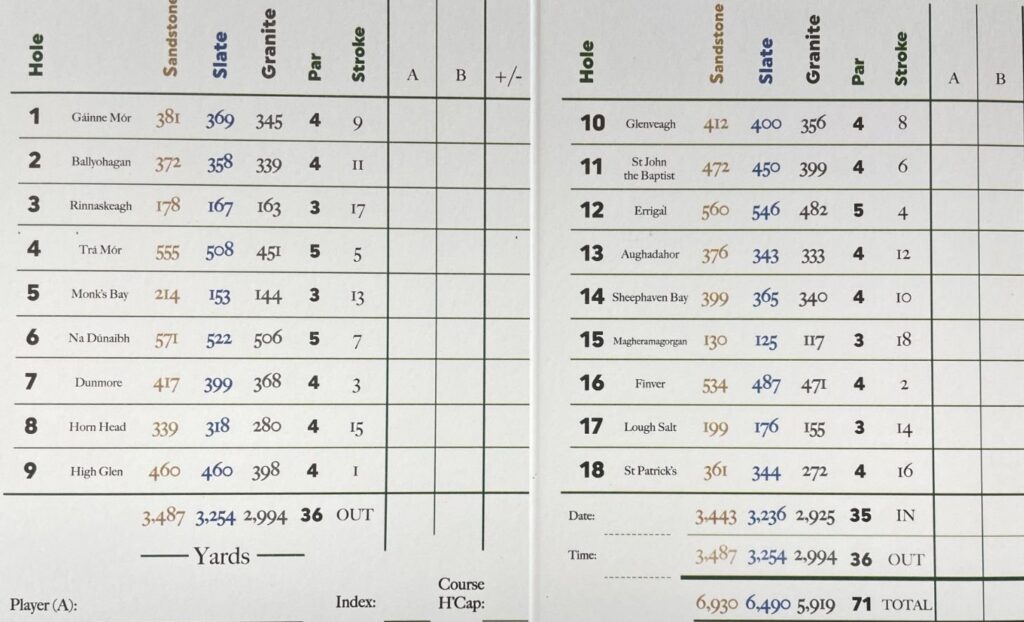
Summary

Tom Doak’s global works are often polarizing and the subject of many modern day golf architecture discussions. Clever, quirky, bold and brilliant is an apt description of his career up to this point. As an original design, St.Patrick’s Links leans closer to Pacific Dunes in its design style than several others in the Renaissance portfolio. The outward side is the ideal introduction for the sublime back nine, where the final six holes are as strong a finish as you’ll find anywhere. You could play here everyday for a year without having the exact same approach shot twice. Already ranked as a top 50 course in the world, Head Greenkeeper/Superintendent Chris Breen and his team are working hard to make sure the playing conditions exceed expectations.
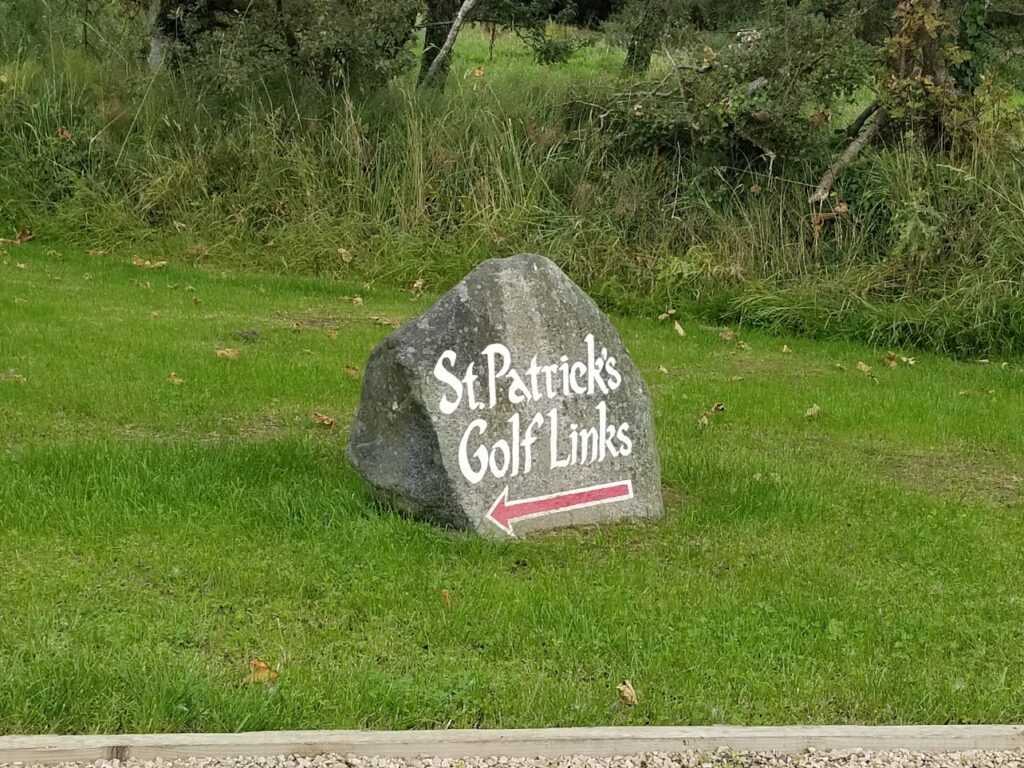
During your time at the resort, you’ll feel the charm of how Rosapenna truly is a family run operation – in the finest sense. It’s very likely you’ll meet Frank Jr or John D. Casey in the pro shop or the hotel to make sure that you have everything that you need. These are passionate people about their golf and hospitality, and the golf world is lucky to have them as pillars in the Ireland golf community. The resort offers stay & play packages that also include rounds on Sandy Hills and Old Tom Morris Links – reservations@rosapenna.ie. or email golf@rosapenna.ie


